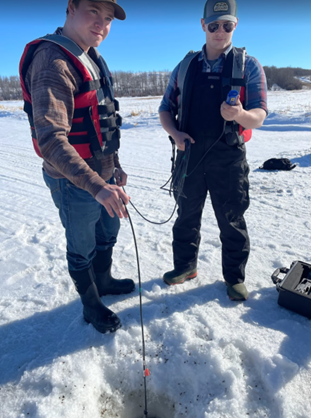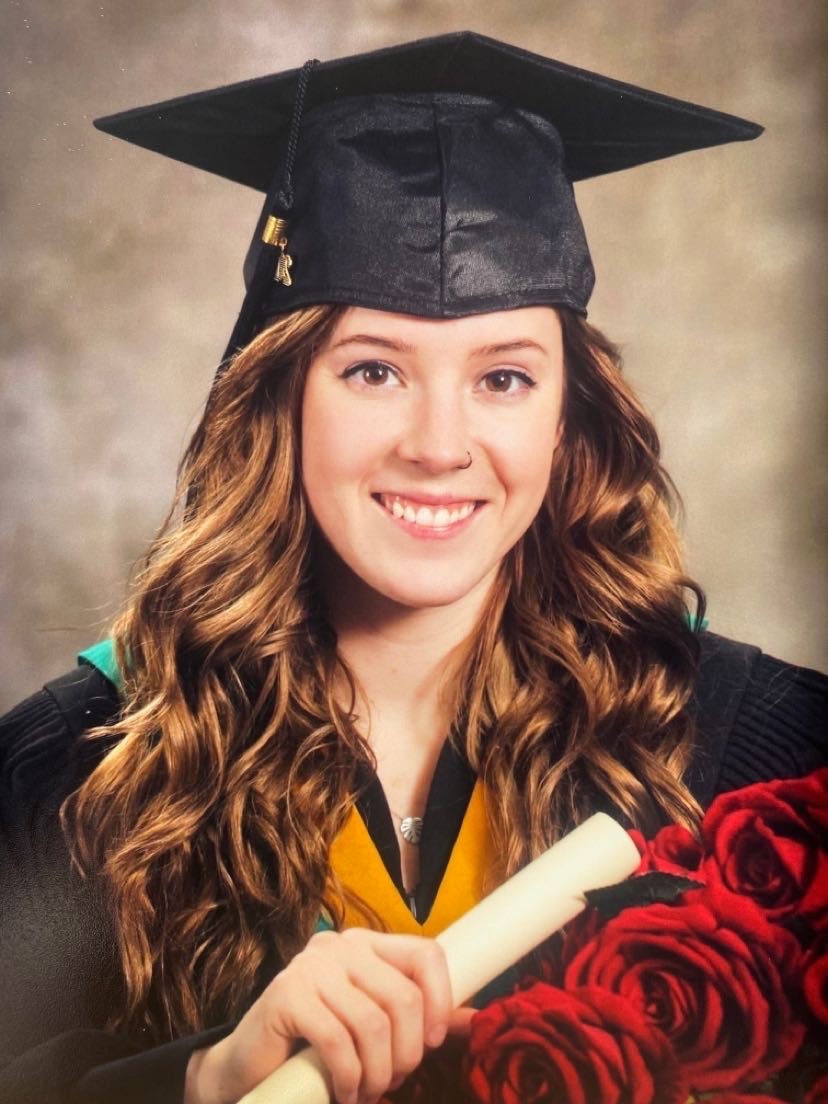Getting our feet wet in water quality monitoring
Written by K.J. Lawson
During our Wildlife Habitat Conservation class at Lakeland College (taught by Professor Nicole Nadorozny), we were granted the opportunity to work on the Student-led Assessment of the Vermilion River project (SAVER), with the North Saskatchewan Watershed Alliance (NSWA), and the Vermillion River Watershed Alliance (VRWA). During our designated lab days throughout the second week of March, we embarked on a mission to assess the water quality of the Vermilion River.
Over a few days, students traveled to different parts along the river as a group, to monitor if there was a distinct change in water quality. Some lab groups assessed the Vermilion River east of Vermilion, and the other groups were sent to sampling sites to the west. As we walked down onto the ice, we drilled holes with an ice auger to find water. After the holes were drilled, and flowing water was located, we used specialized equipment that aided in helping us measure distinct features of the water quality at that specific site. We took measurements of dissolved oxygen, Total Dissolved Salts (TDS), Salinity, pH, Turbidity, and Conductivity. After our tests were completed, we collected water samples, and labeled the bottles with the location, and the date. These would be sent for further testing.
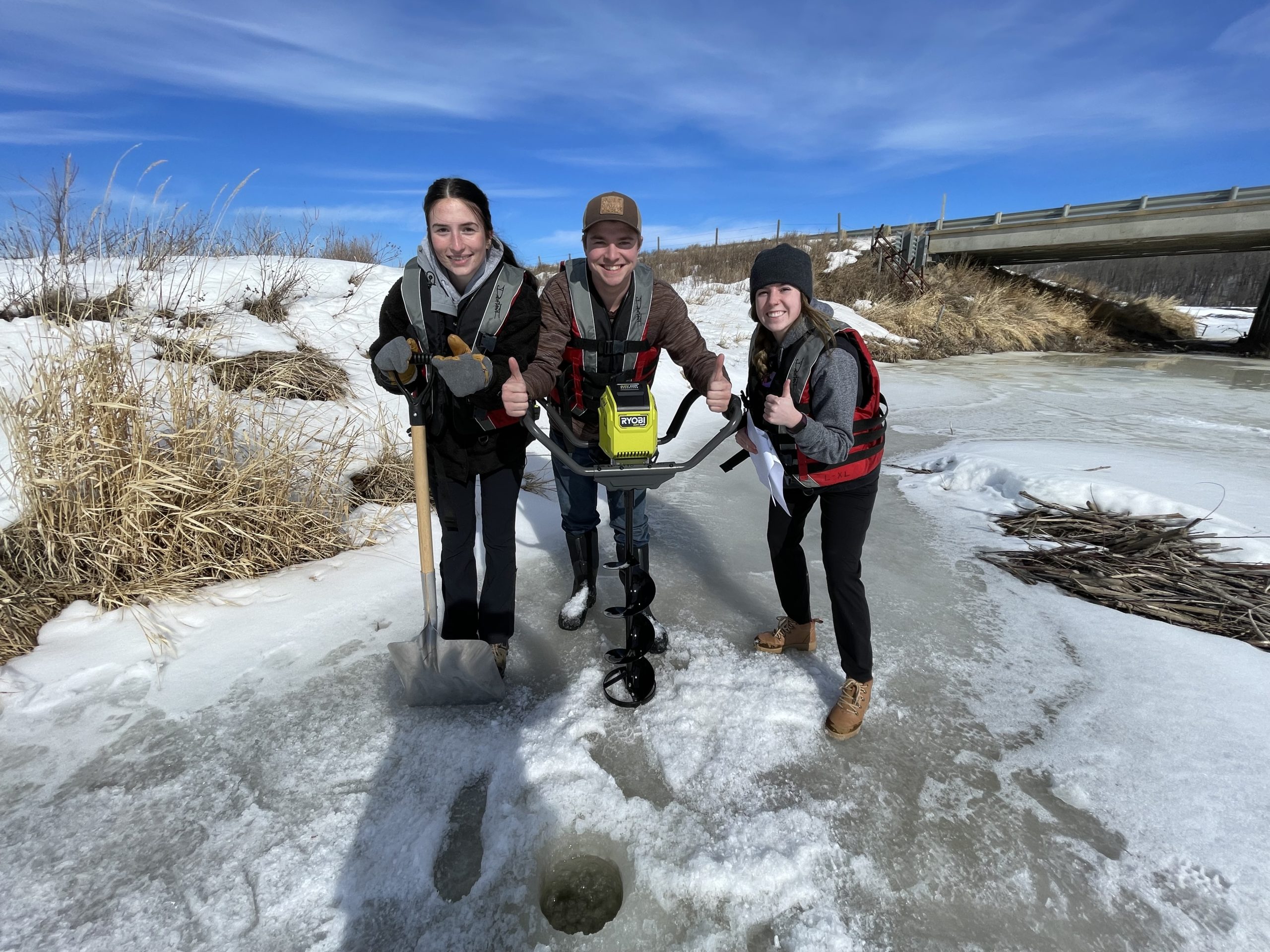
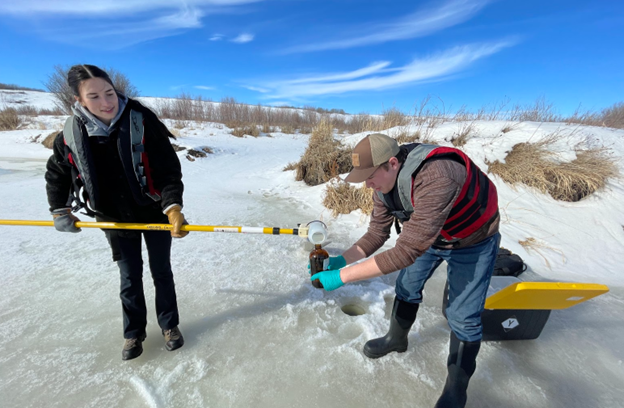
As a Lakeland College student, having the opportunity to be involved in a project like this allows a sneak-peak into what is possible as we finish our schooling and are set out into the environmental science work field. Allowing students the chance to participate with water quality monitoring and experience field work beyond the classroom is extremely valuable, by utilizing knowledge and techniques we learn about in class and using them in a real-life scenario, allows for solidification of learned techniques and skills that can be useful as we embark on our careers joining the field. These outdoor labs are not only incredibly valuable to our learning, but everyone always loves learning outside, even if the weather is a little cold. Being surrounded among nature while learning new skills is a great part of Lakeland College’s hands-on approach to learning.
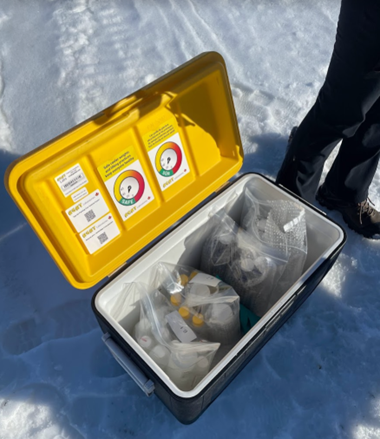
"Allowing students the chance to participate with water quality monitoring and experience field work beyond the classroom is extremely valuable, by utilizing knowledge and techniques we learn about in class and using them in a real-life scenario, allows for solidification of learned techniques and skills that can be useful as we embark on our careers"
Through our time at Lakeland College in the Environmental Science programs, we were taught many industry-regulated techniques through lectures and then through practice during hands-on field labs. Through the course of the two-year diploma, we attended classes in Geographical Information Systems (GIS) and mapping, Applied Hydrology, Limnology, Wildlife Habitat Conservation, and classes in Field Biology. These classes all helped in preparing us to be diligent with our data collection, while also providing us with knowledge and understanding of the importance of aquatic and terrestrial ecosystems. All the techniques we were taught, allowed us to connect to the living world around us and have a greater understanding for how much time and dedication is involved in collecting viable field data.
When talking about field work, everyone has different opinions on what they tend to ‘like’ and ‘dislike’ about field work. In our scenario, it was the middle of March when our lab took place. In Alberta, there was a lot of snow on the ground still, which made accessing sites a very slippery – and wet- excursion. Toes and fingers were cold, but everyone stayed in high spirits. Everyone loved being able to try out the equipment, and watching it register the results of the different sampling sites. There were a lot of laughs shared among the lab groups, and although we came home with wet feet, we all left with smiles on our faces. Being granted this opportunity was extremely exciting for myself and my classmates. On behalf of all of us at Lakeland College, we send our thanks and gratitude to NSWA, VRWA and Lakeland College for organizing this project.
